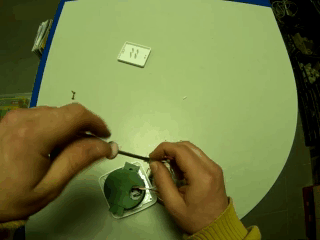One of the main issues that needs to be resolved when buying a water heater is the choice between a flow-through and storage boiler. Both have their advantages, so you need to make a decision carefully. How not to be mistaken and choose the best water heater for your needs, read our material.
CONTENT
- 1 The main differences between flow and storage water heaters
- 2 What to look for when choosing between an instantaneous or storage water heater
- 3 Top 5 best water heaters
- 4 FAQ
The main differences between flow and storage water heaters
The main difference between flow and storage water heaters lies in the names themselves.
Flowing the boiler heats up the water, which passes through its heating element through and through, without lingering. Typically, the heating temperature does not exceed 40-60 degrees. Since such a device does not need to accumulate water, it does not have a hydroaccumulator, which means that the device itself is compact. At the same time, the flow heater consumes a lot of power (usually in the region of 10-20 kW) and, if we are talking about an electric model, you cannot connect it to a regular outlet - you need an automatic machine.
Cumulative the boiler heats water in a special tank - a hydraulic accumulator, and only then gives it to the water supply system. Due to the presence of a voluminous tank (they can be 10 or 200 liters), such a device takes up much more space than a flow-through heater, but requires less electrical power (no more than 1.5-2.5 kW), heats water up to 75-80 degrees and gives it out with a large pressure.
What to look for when choosing between an instantaneous or storage water heater
power usage. Water heaters can be powered from a variety of sources: on the market you can find not only electric, but also gas, solid fuel models and indirect heating devices. However, electric water heaters remain the most popular.
Since flow-through boilers heat the water directly running through them, they do not have time for preheating, which means they need to work more actively. Therefore, the power of such devices is always higher than that of storage heaters. Actually, in a flow-through boiler with an energy consumption of less than 7 kilowatts, there is no special sense - otherwise they will give out water either completely cold or in a very thin stream. It is desirable, of course, that the power be even higher - in the region of 20 kilowatts, then it will be comfortable to use the heater.
Storage boilers heat water in advance, so they do not need high power: usually it does not exceed 1.5-2.5 kilowatts. Despite this, the final power consumption for flow-through and storage models is almost the same: the former work more actively, but less, and the latter, quieter, but longer.
Installation and operation. There are two main points to consider here.
Firstly, due to the difference in power, it is necessary to connect storage and flow heaters to the power supply in different ways. The first ones are enough to plug into an ordinary household outlet. But the second one needs a separate cable connected to its own automatic fuse - a simple socket of 20 kilowatts of power will simply melt.
Secondly, the dimensions and weight of the device affect the installation features. Flow models are very compact and lightweight, so they can be placed anywhere. But with accumulative ones, everything is somewhat more complicated. A voluminous tank perfectly absorbs space, and a boiler with a full hydraulic accumulator weighs very decently, so such a structure cannot be placed anywhere. There are, of course, very compact models for 15-20 liters, designed to be installed directly under the kitchen sink. However, you cannot hide a 100-liter tank under the sink and you cannot hang it on a drywall wall - keep this in mind.
Convenience. But this question is largely philosophical. In principle, a storage water heater is much more convenient than a running water heater - but only if it is already filled with hot water and this water is enough to, for example, take a shower. If all the hot water has gone out, then you need to wait until the boiler heats up a new tank - and this, depending on the volume of the accumulator and the power of the heating element, can take an hour or two.
The flow-through heater, on the one hand, is always ready for work and will warm as much water as needed, but with other, the water, most likely, will not be as hot, and the head will not be as high as in the storage boiler. So the choice is yours.
Top 5 best water heaters
1. Ariston SGA 150
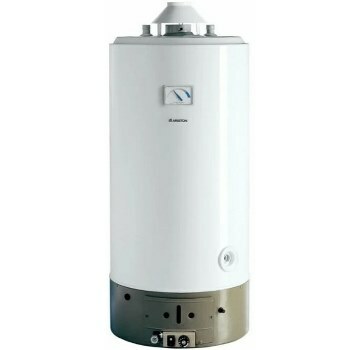
Accumulative gas water heater from a well-known Italian manufacturer of equipment for hot water supply. The tank volume of this model is an impressive 155 liters, so it will be enough for all household needs, even for a large family. Due to its impressive weight, the boiler is installed on the floor. The combustion chamber is open, so the heater should be installed in a separate room equipped with an 81 mm chimney. The main problem with this model is the lack of a built-in thermometer, so if you want to have an idea of the water temperature, you will have to cut it into the pipe yourself. Otherwise, this is a simple and reliable device, which, with a price of around 41,600 rubles, has almost no serious competitors.
Price: ₽ 41 640
riston SGA 150
2. Stiebel Eltron HDB-E 12 Si
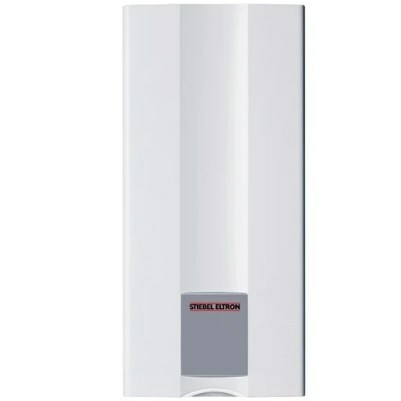
Instantaneous electric water heater for wall mounting. The device is connected to a three-phase network with a voltage of 380 volts and consumes 11 kilowatts of power, which provides a productivity of 5.4 liters per minute. This is enough to create a head indistinguishable from centralized hot water supply. Electronic control is convenient and clear. Heating temperature limitation and overheating protection are provided. The price of the issue is 30,000 rubles, but the unit is definitely worth its money.
Price: ₽ 29 900
Stiebel Eltron HDB-E 12 Si
3. Mora vega 10
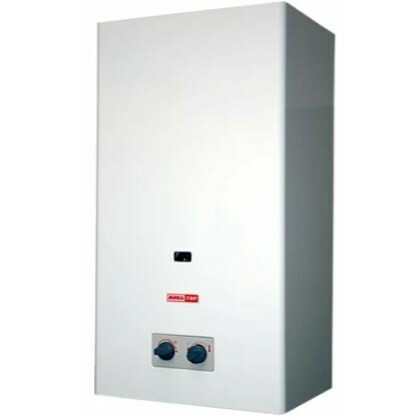
A flow-through gas water heater capable of fully meeting the needs of a private house for hot water supply. The thermal power of the open combustion chamber is an impressive 17.3 kilowatts, which gives an output of 10 liters per minute. Piezo ignition, gas control, as well as automatic maintenance of the outlet water temperature are provided. Mechanical control is simple and reliable. Available heating temperature limitation and overheating protection. It's not a pity to pay 19,000 rubles for such a device.
Price: ₽ 19 222
Mora vega 10
4. Electrolux EWH 100 Formax
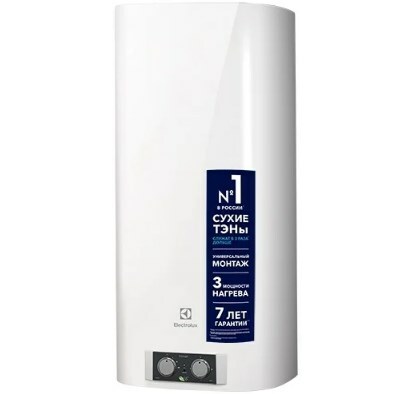
Electric storage water heater with a volume of 100 liters. The power consumption of the heating elements is 2 kilowatts, which allows you to heat a full tank to a maximum temperature of 75 degrees in less than 4 hours. Mechanical control. Protection against switching on without water and against overheating, a safety valve and a protective magnesium anode are provided. There is both an accelerated heating mode and an economy mode with minimal power consumption. The tank is protected against corrosion by enamel. The price of the device for such characteristics is quite acceptable - about 18,000 rubles.
Price: ₽ 17 990
Electrolux EWH 100 Formax
5. Kospel Termo Hit WW 140
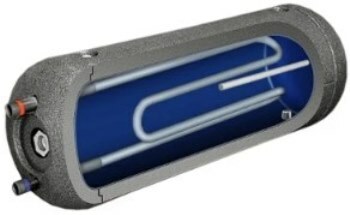
A storage water heater for indirect heating at a price of just over 13,500 rubles. The volume of the storage tank is a serious 140 liters, which is enough to meet all the needs of a private house for hot water. The maximum water heating temperature is 80 degrees with a heat exchanger capacity of 11.4 kilowatts. A magnesium anode is provided to protect against scale, and powder enamel is used to protect the inner tank from corrosion. It is possible to install a tubular electric heater to convert the boiler to electricity.
Price: ₽ 13 600
Kospel Termo Hit WW 140
FAQ
Which water heater will last longer: instantaneous or storage?
There is no definite answer here. A good heater will last longer, which should be properly looked after, regardless of the type. But if we talk about very budgetary options, then, perhaps, a flow-through water heater will be more durable, because the most the weak point of inexpensive boilers - a storage tank - it does not have, which means that it can neither rust nor overgrow scum. In more expensive models, these problems are solved, so that instantaneous and storage boilers from the middle and upper price segments will serve approximately the same.


